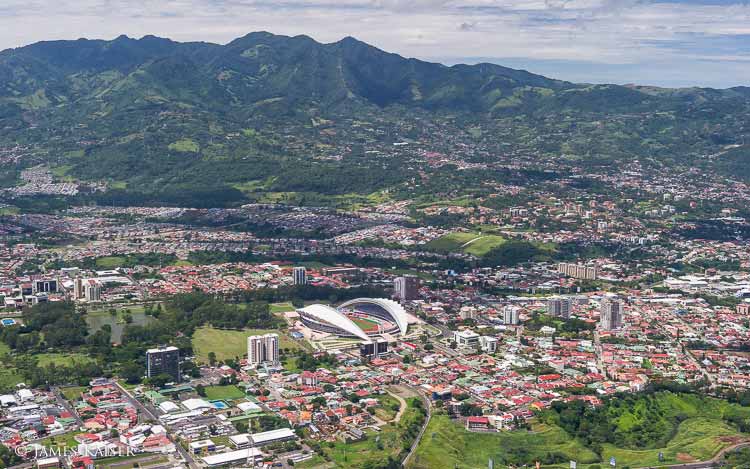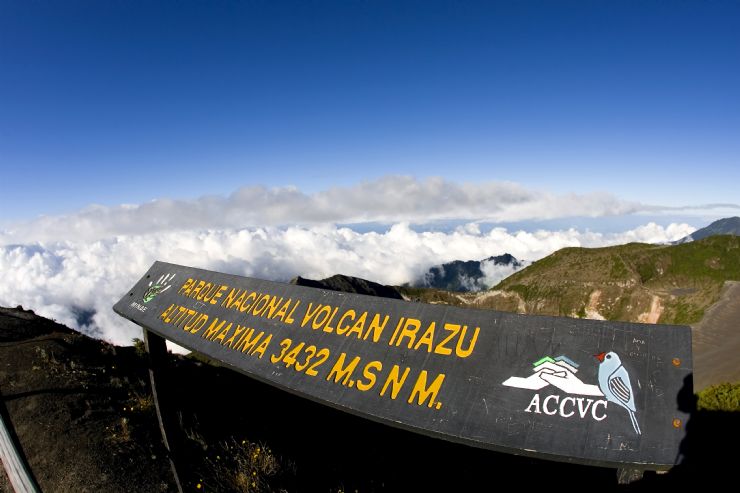Costa Rica
Costa Rica is a country located in Central America that is ranked as one of the most visited international destinations. One of Costa Rica’s main sources of income is tourism. Costa Rica is a democratic and peaceful country and it has not had an army since the year 1949.
Although the country is small and it covers only 0.03 percent of the surface of the globe, it proudly shelters 5 percent of the existing biodiversity in the entire world. Twenty six percent of the country is composed of conservation and natural protected territory.
Costa Rica offers beautiful natural parks, including volcanoes, rain forests, waterfalls and thermal springs. We have put together some of the top destinations as field trip offerings, so make sure to come early and stay the extra day to enjoy this beautiful country.

Irazú Volcano and Cachi (Cartago Province)
Day: Thursday 1st, November 2018
Overview: The day started with breakfast in a local restaurant on the way to Irazú. The drive up to the volcano featured lots of farms growing many of the staples of Costa Rica. We learned about the volcanic landscapes and geomorphology of the region. It was a beautiful day at the Irazú National Park with clear skies and beautiful weather. After the volcano, the group visited the town of Cachi and a lookout where you can see the Cachi hydro-electric plant, its lake and beautiful agriculture landscapes. We ended the day in the city of Cartago at the Basilica of Our Lady of the Angels, the most important catholic church of the country, where more than 1 million people do pilgrimage to visit Los Ángeles virgin every year on August 2nd.
Monteverde, Puntarenas Province (Cloudy tropical forest biological reserve)
Day: Sunday 4th, November 2018
Overview: The ‘Monteverde expedition’ caravanned from congested city streets of San José to the Monteverde Cloud Forest Biological Preserve. Its members learned how to eat jocotes and chinos (native fruits) while their white bus rumbled along the Gulf of Nicoya and gained altitude in its northbound ascent to the cloud forest. From city to periphery, signs transitioned from mostly Spanish to English-dominant signs, convenient for Costa Rica’s ecotourism. In the 1950s, Quakers from the United States formed an intentional community at Monteverde. The Quakers appreciated the area’s environmental significance and took initial measures to protect the cloud forest. Today, the Biological Preserve is a delicate ecosystem animated by roaming clouds and colorful birds, along with other distinctive landscape features and wildlife. The group crossed a hanging bridge, where they learned about how biodiversity increases from the forest floor toward the top of the canopy. The cool, misty hike culminated in a scenic trek along the continental divide, with the Pacific to the west and the Caribbean to the east. On the return to San José, the bus spent almost three hours stuck in heavy traffic with spotty reception, black forest night, and torrential rainfall. Time passed quickly as the passengers laughed and told stories.
Irazú Volcano and Cachi (Cartago Province)
Día: Jueves 1 de noviembre de 2018
Descripción: El día comenzó con el desayuno en un restaurante local de camino a Irazú. El viaje hasta el volcán mostraba muchas granjas que cultivaban muchos de los alimentos básicos de Costa Rica. Aprendimos sobre los paisajes volcánicos y la geomorfología de la región. Fue un hermoso día en el Parque Nacional Irazú con cielos despejados y un clima hermoso. Después del volcán, el grupo visitó la ciudad de Cachi y un mirador desde donde se puede ver la planta hidroeléctrica de Cachi, su lago y hermosos paisajes agrícolas. Terminamos el día en la ciudad de Cartago en la Basílica de Nuestra Señora de los Ángeles, la iglesia católica más importante del país, donde más de 1 millón de personas peregrinan para visitar la Virgen de Los Ángeles cada año el 2 de agosto.
Monteverde, provincia de Puntarenas (Reserva Biológica del Bosque Nuboso de Monteverde)
Día: Domingo 4 de noviembre de 2018
Descripción: La "expedición de Monteverde" se desplaza de las calles de la ciudad congestionada de San José a la Reserva Biológica del Bosque Nuboso de Monteverde. Sus miembros aprendieron a comer jocotes y chinos (frutas nativas) mientras que su autobús blanco retumbó a lo largo del Golfo de Nicoya y ganó altitud en su ascenso hacia el norte hacia el bosque nublado. De la ciudad a la periferia, los signos pasaron de ser predominantemente españoles a signos dominantes del inglés, convenientes para el ecoturismo de Costa Rica. En la década de 1950, los cuáqueros de los Estados Unidos formaron una comunidad intencional en Monteverde. Los cuáqueros apreciaron la importancia ambiental del área y tomaron medidas iniciales para proteger el bosque nuboso. Hoy en día, la Reserva Biológica es un delicado ecosistema animado por las nubes y las coloridas aves, junto con otras características distintivas del paisaje y la vida silvestre. El grupo cruzó un puente colgante, donde aprendieron cómo la biodiversidad aumenta desde el suelo del bosque hasta la parte superior del dosel. La caminata fría y brumosa culminó en una caminata escénica a lo largo de la división continental, con el Pacífico hacia el oeste y el Caribe hacia el este. En el regreso a San José, el autobús pasó casi tres horas atrapado en el tráfico pesado con recepción irregular, noche de bosque negro y lluvias torrenciales. El tiempo pasó rápidamente mientras los pasajeros se reían y contaban historias.



